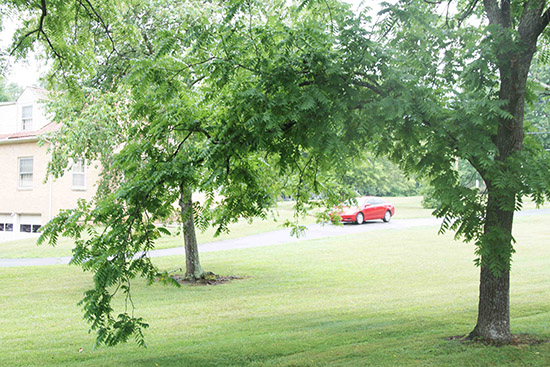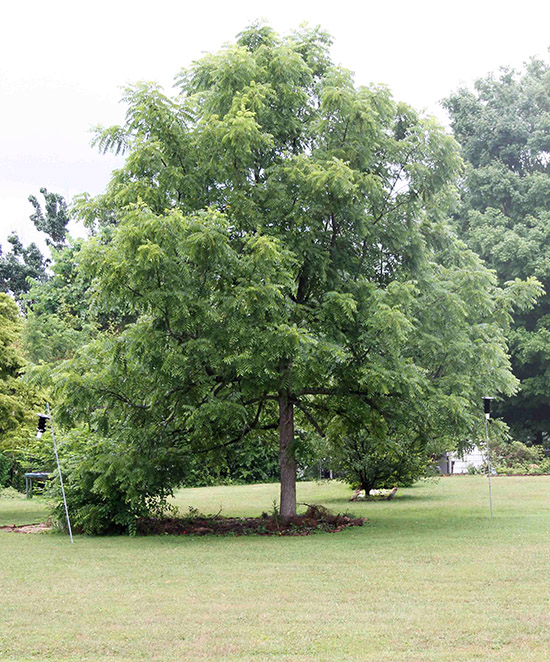Issue 9, June 30, 2014
Thousand Cankers Disease
This past week, specialists from the University of Illinois attended a Thousand Cankers Disease (TCD) workshop in Knoxville, TN. The workshop provided updated information on TCD as well as tours of "Ground Zero", the first areas in the Eastern U.S. to have confirmed the disease in black walnut. TCD symptoms are explained in detail in a previous issue of this newsletter at http://hyg.ipm.illinois.edu/article.php?id=245
The destruction caused by TCD was evident by the numerous tree stumps in surrounding landscapes. However, the most surprising was that not all of the black walnuts were killed by the disease. Many of the trees in high quality sites originally confirmed to have TCD looked relatively healthy, and for the time being, were showing signs of recovery. Branches were bushier than normal due to epicormic branching, but there was also excellent tip growth and foliage as seen in the included photos. This recovery is surprising because observations in the Western U.S. indicated the disease to be lethal to the highly susceptible black walnut. Those researching the pathogen in the Eastern part of the country also reported that symptoms observed on black walnuts were less severe than those grown in the western states. Cankers were often smaller and fewer in number.

Branch of black walnut tree recovering from thousand cankers disease.

Black walnut tree recovering from thousand cankers disease.
An explanation for the difference in symptoms as well as the observed recovery on some trees is not fully understood. Researchers working on TCD hypothesized a number of factors may be involved. The disease appears be more severe on trees grown on stressed sites and that some of the trees that are recovering may have some resistance. Weather conditions may also have played a role in their recovery. The researchers reported that the tree vigor may have been boosted by adequate to near ideal rainfall and growing conditions for the 2013 growing season. The years leading up to the discovery had drought conditions and below average rainfall contributing to tree stress.
Black walnut is not native in infested areas of the Western U.S., but it is native to most of the Eastern U.S. including Tennessee and Illinois. In its native range, the soils, climates, and other factors are those where black walnut thrives. Certainly, these factors are not quite correct for black walnut in the Western U.S., probably resulting in those trees always being under at least some stress. With the correct conditions for black walnut found in the Eastern U.S., the trees may be able to cope with TCD and survive. Either way, TCD still poses a major threat to black walnuts. Significant additional research will be needed, but we at least have a cautiously optimistic hope for black walnuts growing in the Eastern U.S.
TCD is not known to occur in Illinois, but it is important to remain vigilant and report suspicious trees to your local Illinois Department of Illinois field person, your local Extension office, or us. It appears that when TCD arrives in Illinois it will kill street trees and other stressed trees growing in less than ideal sites. Black walnut is typically not planted in landscapes because of the nuts, and it leafing out late in the spring and dropping leaves early in the fall. As a result, black walnuts are usually found around houses built before the 1970's and in other sites where the original forest trees were retained when the house was built. (Travis Cleveland and Phil Nixon)
Authors:
Travis Cleveland
Phil Nixon